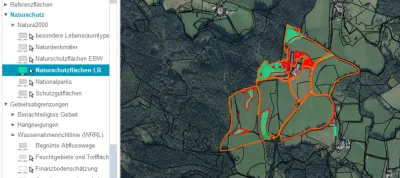General information
Beneficiary type
- Public authority / body
CAP specific objective
- SO4. Agriculture and climate mitigation
- SO6. Biodiversity and farmed landscapes
Intervention type
- Art. 70 – ENVCLIM
Summary
The Austrian agri-environmental programme ÖPUL includes a voluntary top-up measure called the 'regional nature conservation plan'. This is available to farmers who participate in the ÖPUL nature conservation measure.
Within this measure, areas of high ecological value, such as dry or wetland meadows, highly diverse hay meadows or arable biodiversity areas, are managed using tailor-made management concepts developed by farmers and supported by ecologists via a participatory process.
For each identified region, certain packages of management requirements are defined and can be implemented with the support of local farmers.
Results
- By 2023, more than 20 000 farms managing around 85 000 hectares (ha) of ecologically valuable agricultural areas participated in the nature conservation measure.
- In 2024, an additional 894 agricultural holdings applied for the top-up payment.

Promoter
Federal Ministry for Agriculture, Forestry, Regions and Water Management I Department II/3: Agri environment (ÖPUL), mountain farming and less favoured areas
Funding
Total budget 10 258 440 (EUR)
EAFRD: 5 166 298 (EUR)
National/Regional: 5 092 142 (EUR)
Resources
Documents
Links
Context
Within Austria's previous agri-environmental programme, ÖPUL, there was a voluntary top-up measure called the 'regional nature conservation plan', which is available to farmers who are participating in the 'nature conservation' measure. Within this measure, areas of high ecological value are managed in a tailor-made way.
Ecologists work together with farmers to create specific management concepts for particularly valuable areas. Typical nature conservation areas are biotope varieties of species-rich grasslands, such as dry or wetland meadows, highly diverse hay meadows or arable biodiversity areas.
Participatory processes were used during the planning phase to develop targets and identify the measures to achieve them.
Each year, farmers participating in the 'regional conservation plan' receive an area-based payment per hectare as part of the 'nature conservation measure' plus a premium of EUR 270 for attending a compulsory educational event.
Objectives
The regional nature conservation plan top-up measure aims to protect, conserve and restore species and habitats that are particularly valuable for nature conservation. It also aims to boost site-specific nature conservation actions by implementing plans that address biodiversity beyond the single farm area (considering the surrounding environment).
Activities
For the regional nature conservation plan, each federal state in Austria identified specific regions (e.g. Natura 2000 sites and parts of protected areas) where conservation goals could be achieved. In the first step, valuable areas in the selected regions were singled out, and their protection needs were outlined through joint planning workshops and site visits. These steps were carried out by representatives of the nature conservation authorities together with ecologists and farmers from the respective regions.
For each identified region, certain packages of management requirements were defined, and these could then be implemented with the support of local farmers. To participate in the regional nature conservation plan, farmers select a package of management requirements and implement tailor-made biodiversity measures on their meadows, pastures or arable land. The conditions for meeting the regional objectives are set out in the project agreement, which each farmer receives when participating in this top-up measure.
In addition to the tailor-made land management actions, an annual programme of events is provided to participants to support implementation in line with the regional nature conservation plan's objectives. Attendance is obligatory, and participating farmers need to commit to the AECM nature conservation measure (min. 4-year commitment) to be eligible for the top-up. Commitments for the top-up are set annually and are extended automatically if the farmer does not unsubscribe.
Main results
- Some 20 000 farms managing around 85 000 ha of ecologically valuable agricultural areas participate in the nature conservation measure (2023).
- For 2024, all over Austria, 894 agricultural holdings applied for the top-up payment.
Key lessons
- The implementation of this measure clearly shows that comprehensive advisory services are key, especially in the area of nature conservation.
- Furthermore, it shows that small top-up measures within existing action-based measures are a good way of introducing/testing results-based or collective approaches.
“The regional nature conservation plan helps to coordinate the implementation of nature conservation requirements on landscape level and thus improves the protection, conservation and restoration of endangered species and habitats in a way which a single farm approach could not achieve.”
